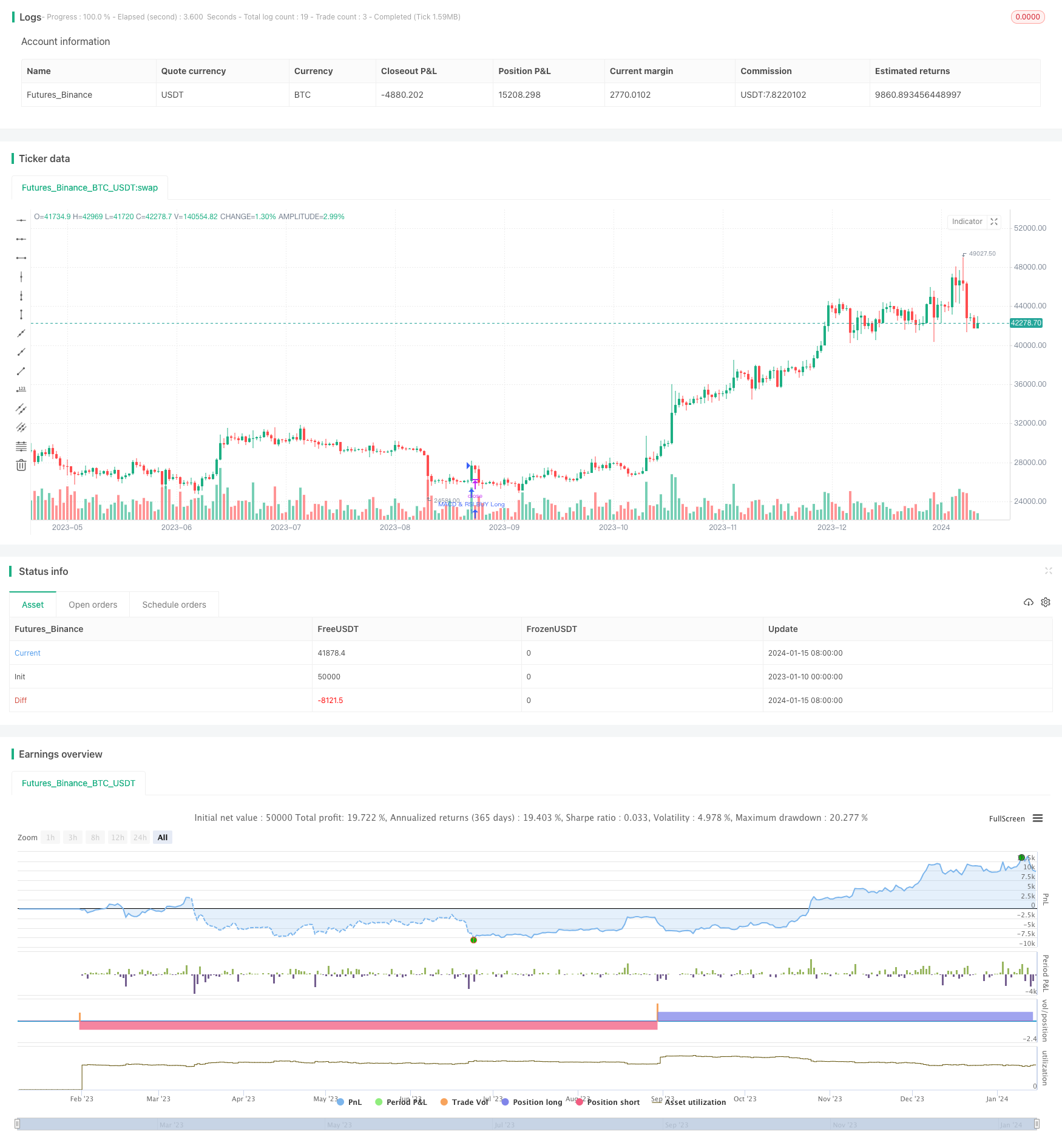
本策略融合了移动平均聚散指标(MACD)、相对强弱指标(RSI)和相对成交量(RVOL)三个指标的信号,形成买入和卖出交易信号,以发现股票价格反转点,实现automated trading。
概述
三指数交叉优化交易策略综合利用MACD、RSI和RVOL三个指标的优势,形成稳定的交易信号。它在入市和出市的时机选择上具有很强的可靠性和稳定性。
MACD用于判断价格反转和趋势方向。RSI用于判断超买超卖区域。RVOL用于判断成交量异动。三者交叉形成强大的交易信号。
该策略适用于中长线持仓交易,也可用于短线交易。它能减少止损 probability,增强盈利概率。
策略原理
MACD判定
- MACD为快速移动平均线减去慢速移动平均线。当MACD上穿信号线为买入信号,下穿信号线为卖出信号。
RSI判定
- RSI大于70为超买区,小于30为超卖区。RSI上穿30为买入信号,下穿70为卖出信号。
RVOL判定
- RVOL为当前成交量除以一段时期的平均成交量。RVOL大于2为高成交量信号。RVOL小于5为低成交量信号。
交易信号生成
当RSI上穿30、MACD上穿信号线和RVOL高于2时,产生买入信号。
当RSI下穿70、MACD下穿信号线和RVOL低于5时,产生卖出信号。
该策略需要同时满足2个判定条件才会产生交易信号,能有效避免假信号,增强稳定性。
优势分析
减少虚假信号概率
- 需要同时满足两个判定条件才会产生信号,能过滤掉部分噪音,避免虚假信号的产生,增加信号的可靠性。
抓住反转点
- MACD针对价格反转很敏感,RSI判断超买超卖区域,两者结合能抓住关键的价格反转点。
强大的实用性
- 该策略全面考量了三个最重要的判断指标,实用性非常强,可广泛适用于不同市场环境。
易于优化升级
- 策略各部分可单独调整参数,也可以加入更多指标,有很强的拓展性。
自动化程度高
- 策略可以no-code连接交易接口,实现全自动化交易,大大减少人工干预。
风险分析
参数优化风险
- MACD、RSI和RVOL的参数需要针对不同市场环境做优化,否则会影响效果。
市场环境变化风险
- 在牛市中效果或许会更好,在熊市中效果可能会打折扣。需要考量大环境。
交易频率风险
- 若追求高频交易,会增加交易成本和滑点风险。需平衡频率。
停损风险
- 没有设置止损,存在更大的亏损风险。需优化加入止损机制。
为控制风险,建议加入自适应止损机制,同时优化参数使其适应不同行情。在一个以上的市场中测试策略效果,增加稳定性。
优化方向
该策略还可从以下几个方面进行优化:
加入止损策略
- 建议加入自适应的止损策略,在亏损达到一定幅度后止损出场。
增加判断指标
- 可引入更多指标,如布林线,KDJ等,形成更稳定的交易信号。
参数自适应优化
- 通过机器学习等方式,实现指标参数的自适应优化。
行业和市场测试
- 在更多不同的行业和市场中测试策略稳定性,确保其适用面。
策略组合
- 与其他稳定策略组合使用,寻找最优策略配比。
通过止损、参数优化、指标优化和组合优化,策略效果和稳定性还可得到进一步提升。
总结
三指数交叉优化交易策略综合考量了MACD、RSI和RVOL三个指标的信号,形成强大的买入卖出判断体系。它增强了交易信号的稳定性和Profitability,能有效识别价格反转点,适用于中长线持仓和短线交易,具有较强的实用性。加入自适应止损和参数优化后,能使策略更加稳健,值得推荐。
策略源码
/*backtest
start: 2023-01-10 00:00:00
end: 2024-01-16 00:00:00
period: 1d
basePeriod: 1h
exchanges: [{"eid":"Futures_Binance","currency":"BTC_USDT"}]
*/
// This source code is subject to the terms of the Mozilla Public License 2.0 at https://mozilla.org/MPL/2.0/
// © BobBarker42069
//@version=4
strategy("MACD, RSI, & RVOL Strategy", overlay=true)
length = input( 14 )
overSold = input( 30 )
overBought = input( 70 )
price = close
vrsi = rsi(price, length)
co = crossover(vrsi, overSold)
cu = crossunder(vrsi, overBought)
fastLength = input(12)
slowlength = input(26)
MACDLength = input(9)
MACD = ema(close, fastLength) - ema(close, slowlength)
aMACD = ema(MACD, MACDLength)
delta = MACD - aMACD
RVOLlen = input(14, minval=1, title="RVOL Length")
av = sma(volume, RVOLlen)
RVOL = volume / av
if (not na(vrsi))
if ((co and crossover(delta, 0)) or (co and crossover(RVOL, 2)) or (crossover(delta, 0) and crossover(RVOL, 2)))
strategy.entry("MACD & RSI BUY Long", strategy.long, comment="BUY LONG")
if ((cu and crossunder(delta, 0)) or (cu and crossunder(RVOL, 5)) or (crossunder(delta, 0) and crossunder(RVOL, 5)))
strategy.entry("MACD & RSI SELL Short", strategy.short, comment="SELL LONG")
//plot(strategy.equity, title="equity", color=color.red, linewidth=2, style=plot.style_areabr)